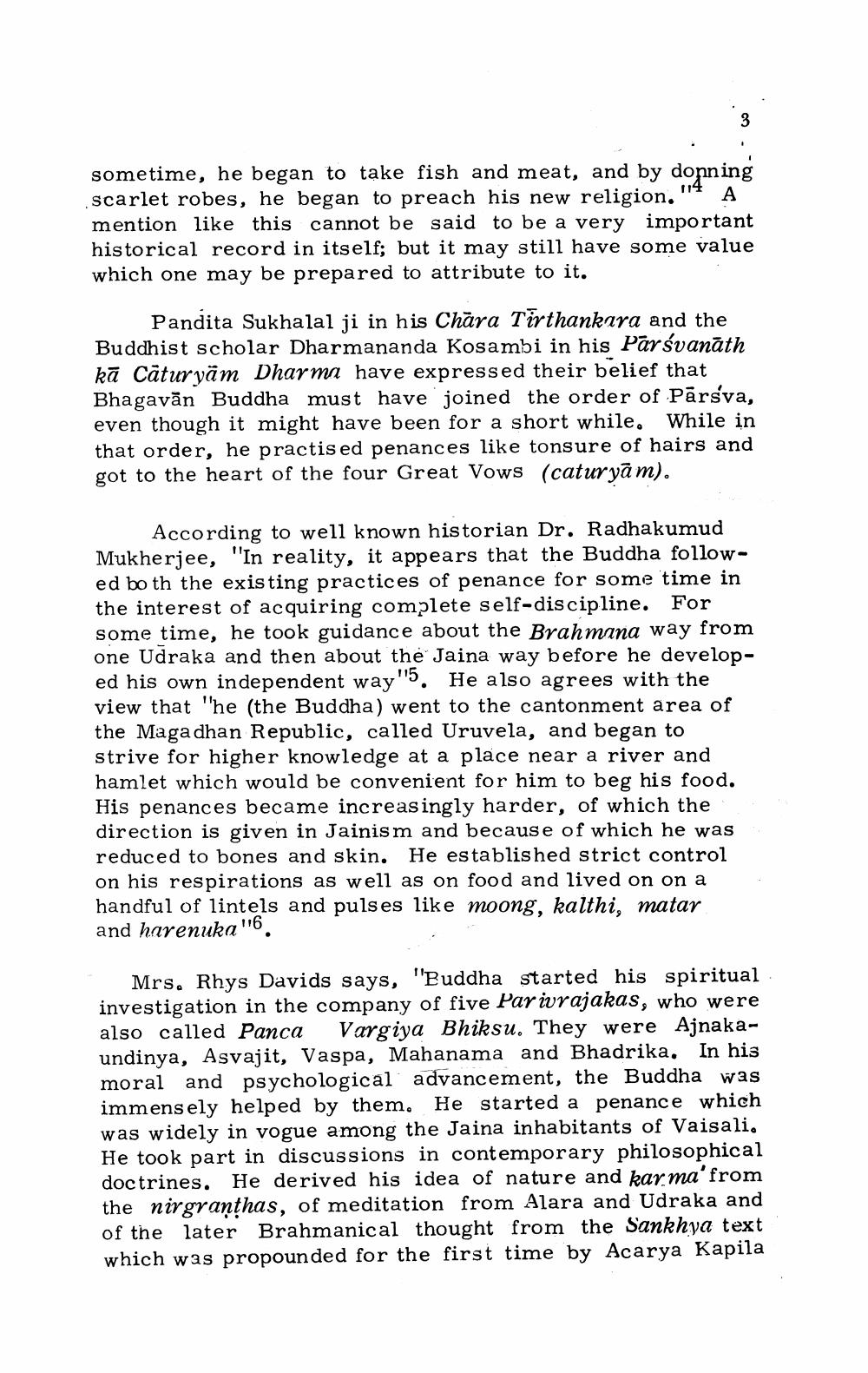________________
sometime, he began to take fish and meat, and by donning scarlet robes, he began to preach his new religion. A mention like this cannot be said to be a very important historical record in itself; but it may still have some value which one may be prepared to attribute to it.
Pandita Sukhalal ji in his Chara Tirthankara and the Buddhist scholar Dharmananda Kosambi in his Parsvanath kā Caturyam Dharma have expressed their belief that Bhagavan Buddha must have joined the order of Pārsva, even though it might have been for a short while. While in that order, he practised penances like tonsure of hairs and got to the heart of the four Great Vows (caturyām).
According to well known historian Dr. Radhakumud Mukherjee, "In reality, it appears that the Buddha followed both the existing practices of penance for some time in the interest of acquiring complete self-discipline. For some time, he took guidance about the Brahmana way from one Udraka and then about the Jaina way before he developed his own independent way 115 He also agrees with the view that "he (the Buddha) went to the cantonment area of the Magadhan Republic, called Uruvela, and began to strive for higher knowledge at a place near a river and hamlet which would be convenient for him to beg his food. His penances became increasingly harder, of which the direction is given in Jainism and because of which he was reduced to bones and skin. He established strict control on his respirations as well as on food and lived on on a handful of lintels and pulses like moong, kalthi, matar and harenuka 116
Mrs. Rhys Davids says, "Buddha started his spiritual investigation in the company of five Parivrajakas, who were also called Panca Vargiya Bhiksu. They were Ajnakaundinya, Asvajit, Vaspa, Mahanama and Bhadrika. In his moral and psychological advancement, the Buddha was immensely helped by them. He started a penance which was widely in vogue among the Jaina inhabitants of Vaisali. He took part in discussions in contemporary philosophical doctrines. He derived his idea of nature and karma' from the nirgranthas, of meditation from Alara and Udraka and of the later Brahmanical thought from the Sankhya text which was propounded for the first time by Acarya Kapila




